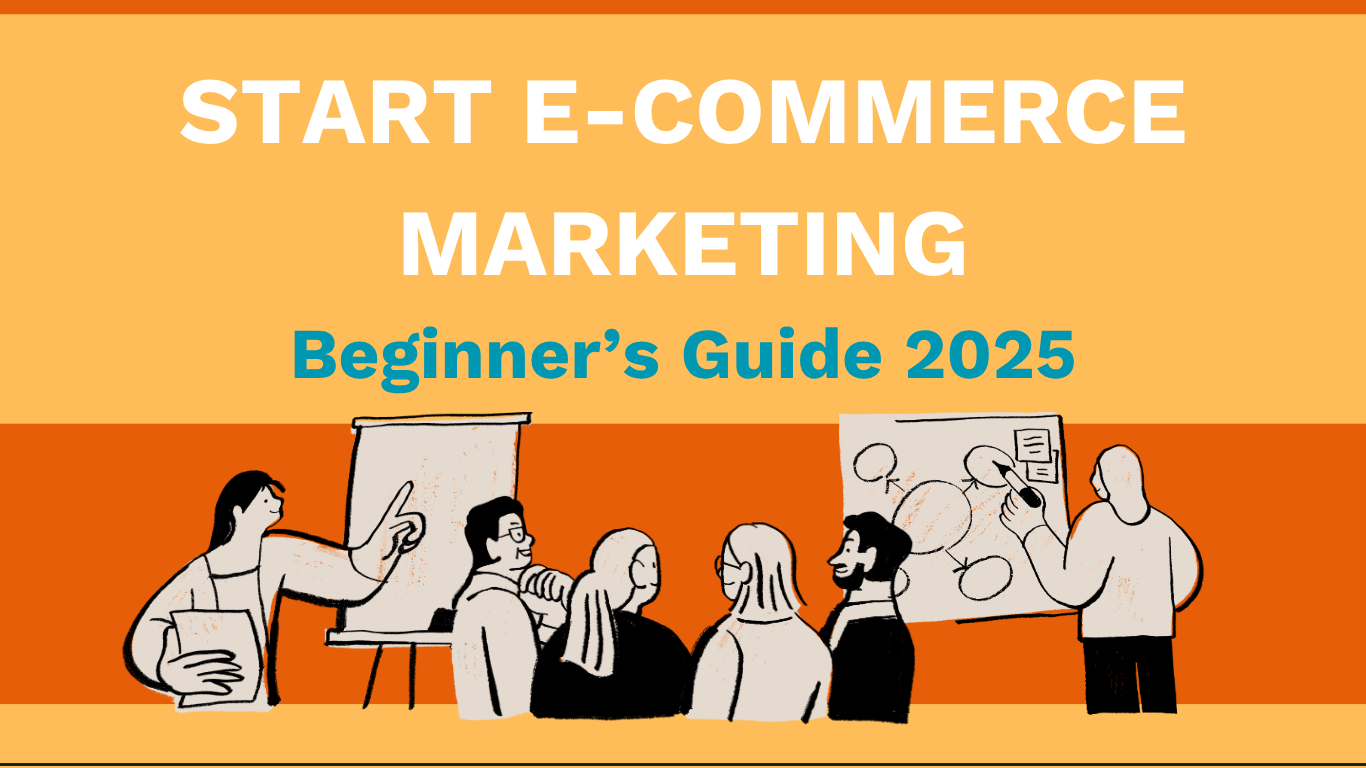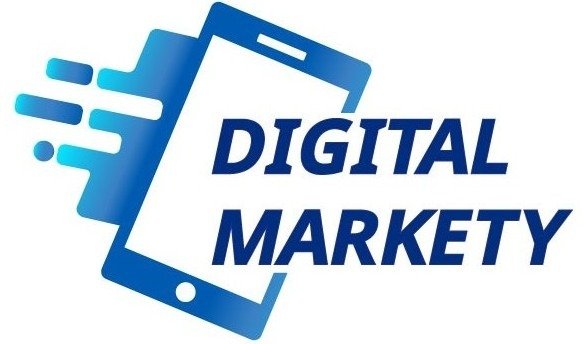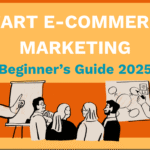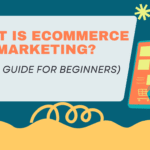
Start eCommerce Marketing: Beginner’s Guide 2025
Introduction to Start eCommerce Marketing:
Start eCommerce Marketing refers to the strategies and processes used to promote and sell products or services online. In an increasingly digital world, e-commerce marketing has emerged as a crucial component of business success. The importance of this marketing approach cannot be overstated, as it enables businesses to reach a global audience and operate outside the constraints traditionally associated with physical storefronts. In 2025, the landscape of Start eCommerce Marketing is evolving rapidly, driven by advances in technology, changes in consumer behavior, and the significance of omnichannel experiences.
Table Of Content
- Introduction to Start eCommerce Marketing
- Understanding Your Target Audience
- Setting Up Your E-commerce Store
- Building an Effective Marketing Plan
- Search Engine Optimization (SEO) for Start eCommerce Marketing
- Leveraging Social Media Marketing
- Email Marketing Essentials
- Analyzing and Optimizing Campaigns
- Staying Ahead: Trends and Future of Start eCommerce Marketing
One of the key trends shaping the Start eCommerce Marketing sector as we move into 2025 is the accelerated adoption of artificial intelligence and machine learning. These technologies are enhancing personalization, allowing businesses to tailor their messaging and product recommendations to individual consumer preferences. Furthermore, the rise of social commerce, integrating shopping with social media platforms, is transforming how brands interact with their customers, making engagement a pivotal aspect of e-commerce marketing efforts.
The primary goals of effective Start eCommerce Marketing strategies include increasing brand awareness, attracting traffic to online stores, converting visitors into paying customers, and fostering customer loyalty. Each of these objectives contributes to building a sustainable and competitive e-commerce presence. For beginners, understanding these goals is essential as they lay the foundation for developing a successful e-commerce marketing plan. By leveraging tools such as SEO, email marketing, and targeted advertising, businesses can effectively communicate their value propositions and establish a strong digital footprint.
As the e-commerce sector continues to thrive, engaging with Start eCommerce Marketing principles will become increasingly vital. Beginners in this domain must recognize the significance of adapting to new trends and harnessing the power of innovative strategies to stay relevant in this fast-paced environment.
Understanding Your Target Audience:
In the rapidly evolving realm of e-commerce marketing, understanding your target audience is paramount to achieving success. Conducting thorough market research is a foundational step that allows businesses to grasp the expectations, preferences, and behaviors of potential customers. By utilizing various methodologies such as surveys, interviews, and focus groups, marketers can gather valuable insights about their audience’s demographics, psychographics, and behavioral patterns.
Demographics, which include factors such as age, gender, income, education level, and location, provide essential information about who your audience is. This basic data helps e-commerce businesses segment their market effectively. However, demographics alone do not give a complete picture. Psychographics, which delve into the interests, values, lifestyles, and motivations of consumers, offer a deeper understanding of what drives consumers’ purchasing decisions. By analyzing psychographic information, marketers can create personalized marketing messages that resonate better with their target audience.
Behavioral analysis is another critical aspect when identifying your target audience. This involves studying consumer interactions with your brand and their purchasing behaviors across various platforms. Tools like Google Analytics, social media insights, and customer feedback can help track user behavior, showing which products are most popular, what content engages customers, and where potential pitfalls may occur in the buying process. Understanding these behaviors enables e-commerce marketers to tailor their strategies to meet the specific needs of different audience segments.
By integrating insights from demographic, psychographic, and behavioral analysis, e-commerce businesses can establish targeted marketing campaigns. These campaigns are more likely to engage consumers effectively, leading to improved conversion rates. Ultimately, investing time and resources into understanding your target audience can yield significant returns in the competitive landscape of e-commerce marketing.
Setting Up Your E-commerce Store:
Establishing an e-commerce store is a critical step for aspiring online entrepreneurs. The first task in this process is to select a reliable e-commerce platform that aligns with your business goals. Popular platforms such as Shopify, WooCommerce, and BigCommerce offer user-friendly interfaces, extensive customization options, and robust support systems. Each platform has its unique strengths; for instance, Shopify is renowned for its ease of use, while WooCommerce offers more flexibility for those who want to self-host their ecommerce sites.
Once the platform is chosen, the next step involves designing the store layout. This includes selecting a theme that resonates with your brand identity, ensuring that it is mobile-responsive, and creating an engaging user experience. A well-designed layout not only enhances aesthetic appeal but also improves navigation, making it easier for potential customers to browse products and complete transactions. It is important to incorporate visually appealing images and intuitive menus to keep visitors engaged.
Optimization of product listings is equally crucial. This encompasses creating informative product descriptions, utilizing high-quality images, and implementing relevant keywords to improve search visibility. Effective product titles and well-structured categories play a vital role in enhancing user experience and facilitating better search results. Additionally, ensure that your store complies with legal considerations, such as acquiring appropriate licenses, ensuring data protection, and respecting consumer rights.
As you finalize the setup of your e-commerce store, attention must be given to payment gateway options. Selecting secure and efficient payment processors ensures that transactions are smooth and trustworthy for your customers. Options like PayPal, Stripe, and Square not only facilitate quick payments but also build customer confidence through secure transactions. By following these steps, you can establish a solid foundation for your e-commerce venture, setting the stage for future success.
Building an Effective Marketing Plan:
Creating a comprehensive e-commerce marketing plan is crucial for beginners looking to establish a successful online business. The first step involves setting clear marketing goals that align with your overall business objectives. These goals should be specific, measurable, achievable, relevant, and time-bound (SMART). For instance, you might aim to increase website traffic by 25% over six months or boost email subscribers by 15% within three months. Having defined goals provides direction and metrics for assessing progress.
Once your goals are established, the next component of your marketing plan involves budgeting. This is vital as it determines how much you can allocate toward various marketing channels such as social media, email marketing, and search engine optimization (SEO). Start by evaluating your total budget and then break it down into specific categories. Make sure to consider costs associated with tools, advertising, content creation, and personnel, ensuring that your budget is consistent with your expected return on investment.
The selection of appropriate marketing channels is the next critical step. Social media platforms such as Facebook, Instagram, and Pinterest offer diverse avenues to engage with customers, depending on your target audience. Leveraging email marketing can also be effective; it helps in nurturing leads and retaining existing customers through personalized communication. SEO should not be overlooked, as it enhances your visibility on search engines and drives organic traffic to your e-commerce site.
Throughout this process, it is essential to monitor your marketing activities closely. Use analytics tools to track the performance of each channel relative to your goals. This way, you can make informed adjustments to your strategy as necessary. By methodically building your marketing plan, you lay a strong foundation for your e-commerce venture, allowing it to evolve and adapt in the dynamic online marketplace.
Search Engine Optimization (SEO) for Start eCommerce Marketing:
Search Engine Optimization (SEO) plays a crucial role in the success of e-commerce businesses. It encompasses a series of strategies designed to increase visibility in search engine results, thereby driving organic traffic to online stores. For beginners venturing into e-commerce marketing, understanding the basic principles of SEO is essential for establishing an effective online presence.
On-page SEO involves optimizing individual web pages to rank higher and earn more relevant traffic. Key elements of on-page SEO include keyword research, which helps identify suitable keywords related to products or services offered by an e-commerce website. Integrating these keywords naturally throughout website content, meta descriptions, and image alt texts can significantly enhance discoverability in search engine results. Additionally, improving website usability is critical—ensuring that the website is mobile-friendly, loads quickly, and offers an intuitive navigation experience can lead to lower bounce rates and higher conversion rates.
On the other hand, off-page SEO refers to actions taken outside of one’s website to impact rankings within search engine results. A key strategy in off-page SEO is building backlinks; acquiring links from reputable external sites can enhance credibility and authority, rendering the e-commerce platform more attractive to search engines. Engaging in social media marketing and creating shareable content can further amplify off-page efforts, increasing opportunities for generating valuable backlinks.
For e-commerce businesses looking to monitor and improve their SEO performance, various tools and resources are available. Google Analytics and Google Search Console provide insights into website traffic and performance, allowing owners to assess which strategies are effective and where improvements are necessary. SEO tools like SEMrush or Ahrefs can aid in keyword research and backlink analysis, enabling e-commerce marketers to refine their strategies continually. By understanding and implementing these SEO fundamentals, beginners can lay the groundwork for successful e-commerce marketing initiatives.
Leveraging Social Media Marketing:
In the dynamic landscape of e-commerce marketing, social media platforms have emerged as crucial tools for businesses aiming to connect with their target audience. For 2025, leveraging social media marketing involves a strategic approach that combines engaging content creation, influencer collaborations, and sophisticated advertising campaigns. Each platform offers unique opportunities, and understanding these can significantly enhance customer engagement and retention.
To create engaging content, businesses should focus on authenticity and storytelling. Posting high-quality images and videos that showcase products in use can resonate well with potential customers. Interactive formats such as polls, quizzes, and live sessions can also foster community engagement, inviting customers to participate in conversations about products or brand stories. Furthermore, user-generated content can be invaluable; encouraging customers to share their experiences not only expands reach but also builds trust.
Influencer marketing has become a vital aspect of social media strategy. By identifying and collaborating with influencers whose audiences align with their product offerings, e-commerce brands can tap into new customer bases. In 2025, utilizing social media analytics tools to track influencer performance will be essential, enabling businesses to assess the effectiveness of these partnerships and adjust their strategies accordingly.
Managing social media advertising campaigns efficiently is another key strategy. Platforms like Facebook, Instagram, and TikTok offer advanced targeting options that allow businesses to reach specific demographics based on interests, behaviors, and purchasing patterns. Marketers should focus on A/B testing their ad creatives and messages to determine what resonates most with their audience. Moreover, incorporating new features such as shoppable posts and stories can directly drive sales from social media, transforming engagement into revenue proactively.
Overall, the evolving social media landscape in 2025 presents numerous opportunities for e-commerce marketing. By strategically utilizing these platforms, businesses can attract and retain customers more effectively than ever before.
Email Marketing Essentials:
Email marketing remains a cornerstone of effective e-commerce marketing strategies, especially for beginners venturing into the dynamic digital marketplace of 2025. Its value lies in establishing direct communication with customers, fostering relationships, and ultimately driving conversions. To harness the full potential of email marketing, it is vital to build and maintain a robust email list. This can be achieved through multiple channels, such as website sign-up forms, social media promotions, or even online events that encourage visitors to subscribe.
Once a substantial email list is in place, the next step is to craft compelling email content. The key to engaging recipients lies in delivering valuable and relevant information that resonates with their interests. Segmentation of the email list can further enhance this process, allowing marketers to tailor messages based on customer behavior, preferences, or past purchases. Utilizing dynamic content or personalized offers can significantly improve engagement rates and foster a sense of connection with the brand.
Analyzing campaign performance is crucial for refining email marketing tactics. Metrics such as open rates, click-through rates, and conversion rates provide insights into the effectiveness of the content and overall strategy. A/B testing different subject lines, content formats, and sending times can reveal valuable data that guides future campaigns. Also, maintaining compliance with regulations such as GDPR or CAN-SPAM is imperative to avoid potential pitfalls.
In conclusion, mastering email marketing is an essential step for e-commerce beginners. By focusing on building a solid email list, crafting personalized and engaging content, and continuously analyzing performance, marketers can effectively reach and convert customers, ensuring sustained growth for their online businesses.
Analyzing and Optimizing Campaigns:
In the fast-paced world of e-commerce marketing, the ability to analyze and optimize campaigns is crucial for achieving success. Data analytics provides marketers with the insights needed to understand consumer behavior, measure campaign effectiveness, and make informed decisions. For beginners in 2025, grasping the importance of key performance indicators (KPIs) is essential. These metrics, which may include conversion rates, click-through rates, and return on investment, enable businesses to assess how well their marketing strategies are performing.
To track marketing campaign performance effectively, beginners must familiarize themselves with several analytics tools. Google Analytics, for example, offers comprehensive features to monitor website traffic, track user behavior, and evaluate the success of various marketing channels. Social media platforms also provide their own analytical tools, allowing marketers to gauge engagement levels and audience demographics. By regularly reviewing these metrics, one can identify patterns and trends tied to customer preferences, which are vital for tailoring marketing efforts.
In addition to tracking performance through analytics, continuous optimization is necessary for enhancing the effectiveness of e-commerce campaigns. This process involves making incremental adjustments based on data insights to improve overall performance. A/B testing is a powerful method that allows marketers to compare two variations of a campaign element—such as email subject lines or landing page designs—to determine which performs better with their audience. By testing and iterating multiple elements, marketers can refine their strategies and ultimately drive higher conversions.
To summarize, analyzing and optimizing campaigns is an ongoing process that requires vigilance and adaptability. By harnessing data analytics and employing A/B testing, e-commerce marketers can create more effective campaigns that resonate with their target audiences and yield better results. This approach ensures that marketing strategies evolve in alignment with consumer needs, leading to sustained growth in the dynamic e-commerce landscape.
Staying Ahead: Trends and Future of Start eCommerce Marketing
As we progress into 2025, Start eCommerce Marketing is poised to undergo significant transformations driven by technological advancements and shifts in consumer behavior. One of the foremost trends is the increased integration of artificial intelligence (AI) and machine learning into marketing strategies. These technologies enable businesses to analyze vast amounts of data, allowing for personalized marketing campaigns that resonate with individual consumer preferences. AI-driven tools can optimize product recommendations, automate customer service through chatbots, and enhance decision-making processes based on predictive analytics.
Another critical trend is the rise of automation in various aspects of marketing. Automation tools streamline repetitive tasks such as email marketing, social media posting, and lead nurturing, freeing up time for marketers to focus on strategic planning and creative efforts. This shift not only increases efficiency but also ensures more timely and relevant communication with consumers, ultimately enhancing customer experience and loyalty.
Moreover, augmented reality (AR) and virtual reality (VR) are becoming increasingly integral to e-commerce marketing. These immersive technologies provide consumers with novel shopping experiences by allowing them to visualize products in their own environments before making a purchase. For instance, furniture retailers are using AR to help customers see how a piece would fit in their living space, enhancing their confidence in the buying process.
Social commerce is also on the rise, with platforms integrating shopping features that facilitate direct purchases within social media applications. This trend highlights the importance of a robust social media strategy that aligns with consumers’ shopping habits while leveraging influencers to reach wider audiences.
In conclusion, staying ahead in the Start eCommerce Marketing landscape in 2025 will necessitate embracing emerging technologies and adapting to shifting consumer preferences. By leveraging AI, automation, AR, and social commerce, beginners can effectively position themselves to thrive in an increasingly competitive environment.





The examples you used made this so easy to follow.”